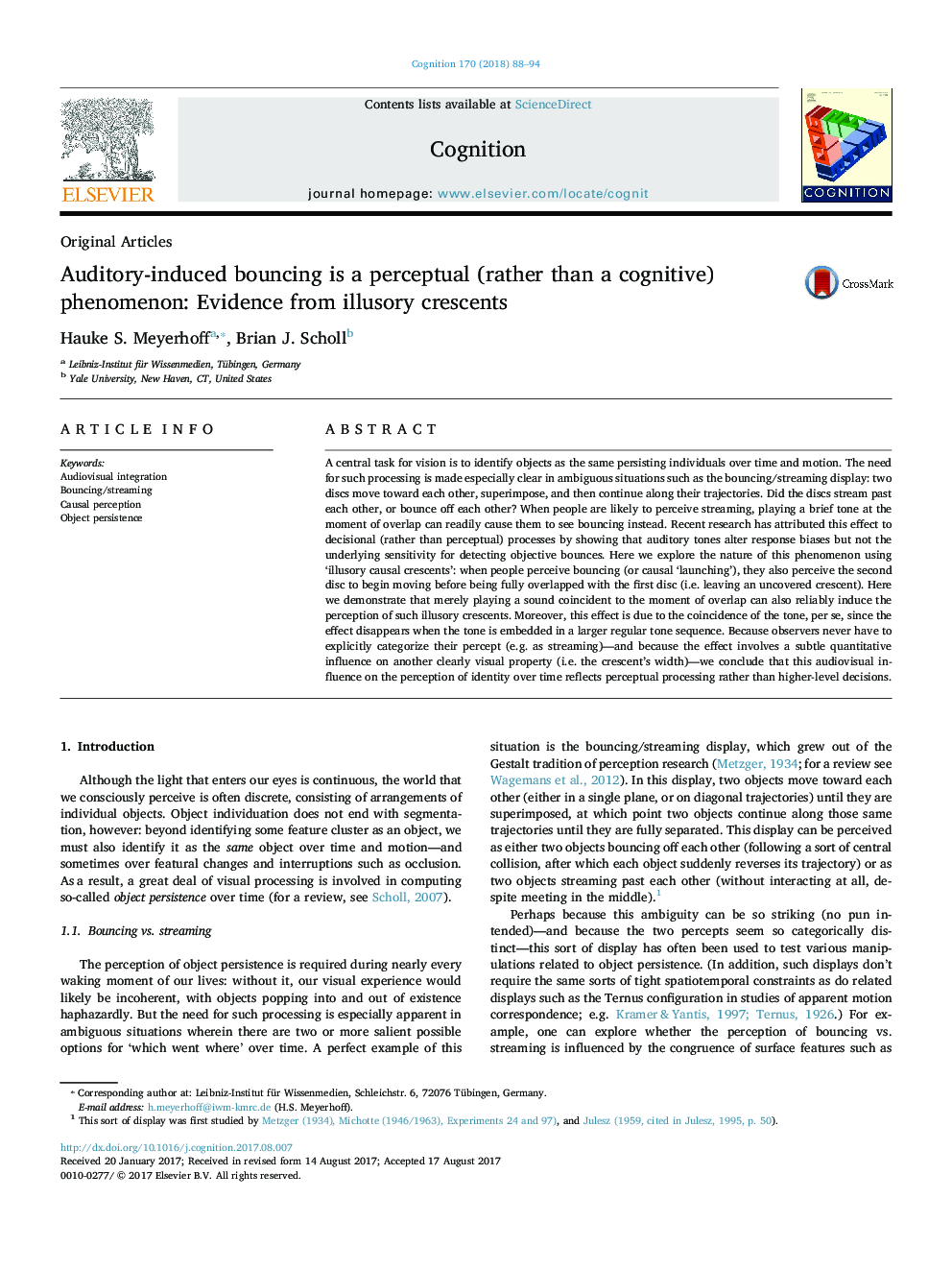| Article ID | Journal | Published Year | Pages | File Type |
|---|---|---|---|---|
| 5041402 | Cognition | 2018 | 7 Pages |
A central task for vision is to identify objects as the same persisting individuals over time and motion. The need for such processing is made especially clear in ambiguous situations such as the bouncing/streaming display: two discs move toward each other, superimpose, and then continue along their trajectories. Did the discs stream past each other, or bounce off each other? When people are likely to perceive streaming, playing a brief tone at the moment of overlap can readily cause them to see bouncing instead. Recent research has attributed this effect to decisional (rather than perceptual) processes by showing that auditory tones alter response biases but not the underlying sensitivity for detecting objective bounces. Here we explore the nature of this phenomenon using 'illusory causal crescents': when people perceive bouncing (or causal 'launching'), they also perceive the second disc to begin moving before being fully overlapped with the first disc (i.e. leaving an uncovered crescent). Here we demonstrate that merely playing a sound coincident to the moment of overlap can also reliably induce the perception of such illusory crescents. Moreover, this effect is due to the coincidence of the tone, per se, since the effect disappears when the tone is embedded in a larger regular tone sequence. Because observers never have to explicitly categorize their percept (e.g. as streaming)-and because the effect involves a subtle quantitative influence on another clearly visual property (i.e. the crescent's width)-we conclude that this audiovisual influence on the perception of identity over time reflects perceptual processing rather than higher-level decisions.
